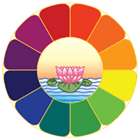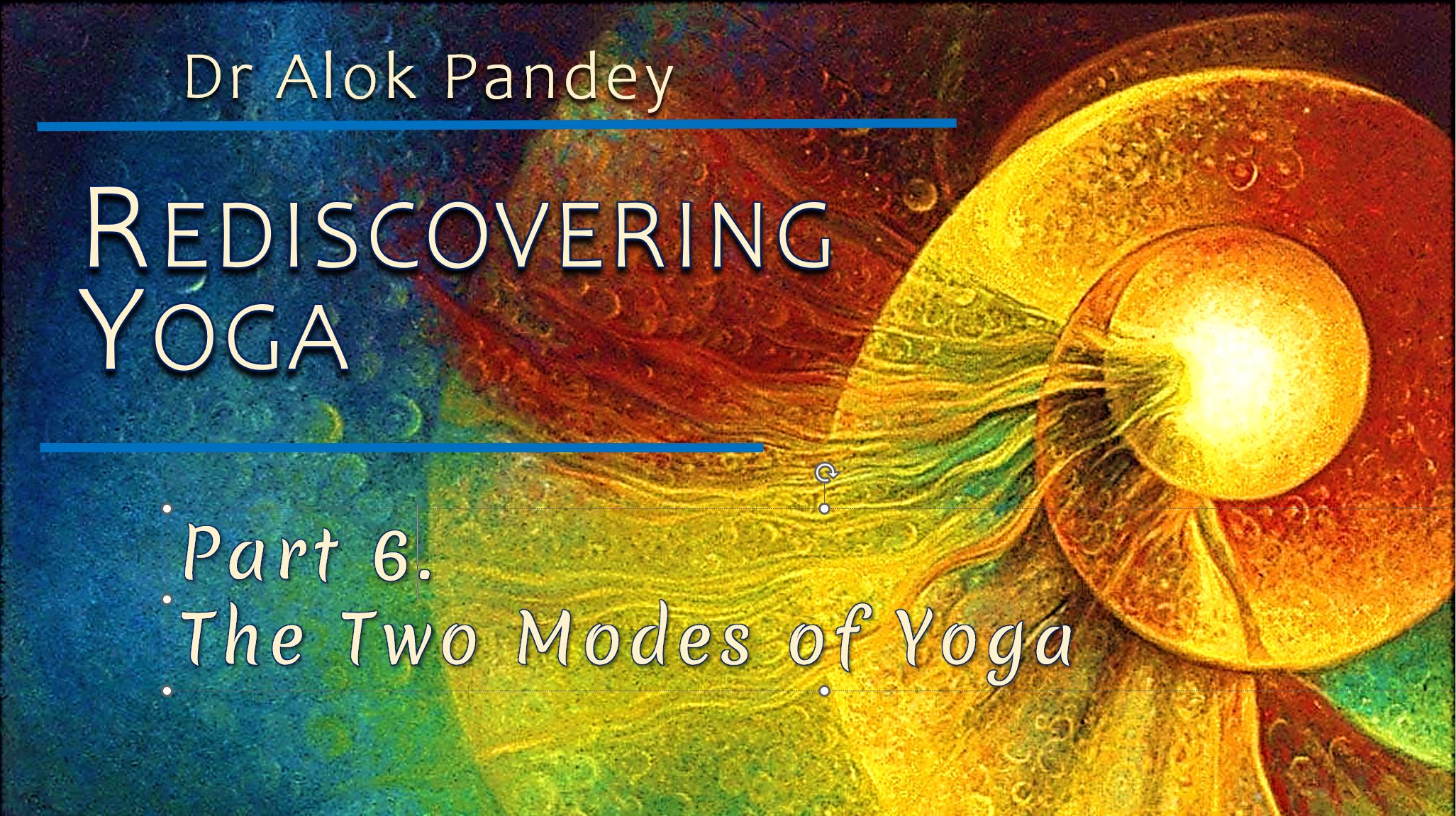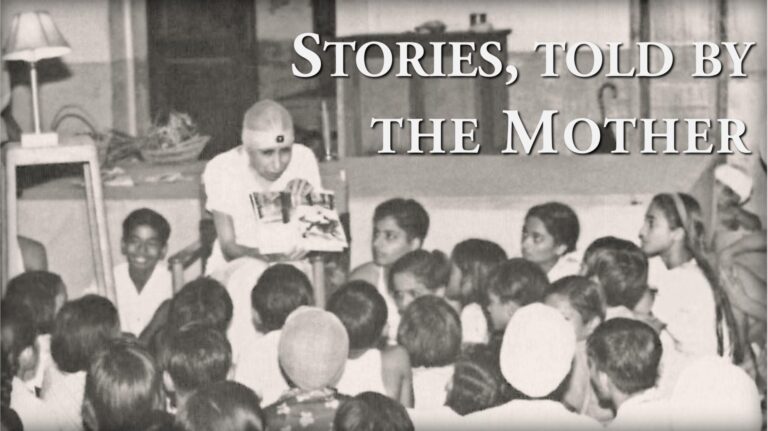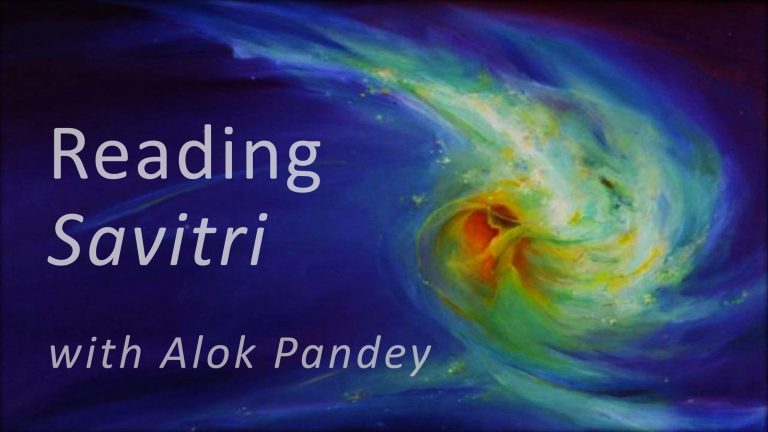“No synthesis of Yoga can be satisfying which does not, in its aim, reunite God and Nature in a liberated and perfected human life or, in its method, not only permit but favour the harmony of our inner and outer activities and experiences in the divine consummation of both. For man is precisely that term and symbol of a higher Existence descended into the material world in which it is possible for the lower to transfigure itself and put on the nature of the higher and the higher to reveal itself in the forms of the lower. To avoid the life which is given him for the realisation of that possibility, can never be either the indispensable condition or the whole and ultimate object of his supreme endeavour or of his most powerful means of self-fulfilment. It can only be a temporary necessity under certain conditions or a specialised extreme effort imposed on the individual so as to prepare a greater general possibility for the race. The true and full object and utility of Yoga can only be accomplished when the conscious Yoga in man becomes, like the subconscious Yoga in Nature, outwardly conterminous with life itself and we can once more, looking out both on the path and the achievement, say in a more perfect and luminous sense: ‘All life is Yoga’ [CWSA 23: 8]
Yoga takes place in two modes, consciously or unconsciously. Subconscious Yoga is when the seeking for something higher and truer, something permanent, something perfect that can give us lasting peace and joy, is vaguely there. Nor does one know how to find what one wants. One is in the darkness of ignorance so to say. Hence one gropes for whatever handle or lever one finds or starts taking whatever road one sees in front that is apparently promising us the hoped-for, longed-for Paradise. In ordinary life since we are hardly conscious of anything else than what the senses reveal and the desires push us to acquire, we start looking for objects to satisfy our desires ignorantly believing that it is this that will fulfil our seeking. But after repeated frustrations, possibly through a number of lives as Indic spiritual thought reveals, we eventually start looking elsewhere and search for other roads. We begin to analyse and discern the real as opposed to apparent causes of our suffering, begin to seek something that can last and endure, something that can be permanent. Thus, some kind of clarity grows and from behind the veil of ignorance, sense attachments, desires something truer and deeper begins to emerge. It is then that we begin to look beyond the limits of our humanness and seek for a greater Light and Truth. We may call it God, or by whatever name or no name. We can be drawn towards this something truer and greater and vaster through this form or that form of even call it Formless. We may believe It is a Being of infinite divine qualities or a state of consciousness without any qualities or both at once. As is our basic belief so is our first contact with this Reality that transcends both our senses and our mind. The Divine is One but being infinite He or She or It or That or very simply the true Self, the Self of self has infinite facets, infinite aspects, even infinite moods and ways of working. But since human beings are limited and finite, they come in contact with one or few aspects of the Divine.
Even though the fundamental experience of the contact with the Divine Reality is identical everywhere yet it takes so many shades and expresses in so many ways, blossoms and develops in so many diverse directions. It is this variety that has led to the great divergence in beliefs about the Divine, in the evolution of so many ways and paths and techniques and processes and methods which is only natural and inevitable. Sanatan Dharma recognising this inherent unity and complexity has always accepted and accommodated this diversity of cults and sects and religious beliefs and approaches. On the other hand, there are extremely narrow and rigid cults that remain stuck in a single formula or a single approach and a single book. It is this extreme exclusivity that has turned religion from a book to a bane as indeed all things, whether ideological or scientific when followed passionately and in an exclusive dogmatic one-sided manner lead to.
It may be necessary to point out here that the dogmatic assertions of a materialistic Science illegitimately applying itself in every field, almost with an evangelist fervour to convert all others into its fold has done as much harm to the expansion of man’s soul or the human spirit as religions with fixed beliefs have. One traps them in the cage of matter, the other holds is captive in the prison of the mind. One locks the prison with doubt and scepticism guarded by the sentry Reason and the bars of senses that can hardly notice all that enters and leaves trying to capture truth in its limited formulas. Perhaps it gets the body but the soul escapes, a dead corpse dissected by its scalpel of analytical reason it’s only gain. The other locks the prison with fear guarded by the sentries of reward and punishment and the bars of belief while keeping out the truth of things. It tries to bind Truth by chains of formulas and perhaps gets a hurried glimpse of the garment while the Person escapes its eyes. Both miss the essence and hold the dried flower in their hands, – one admiring its petals, the other counting them.




